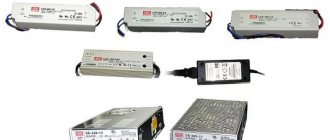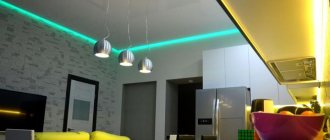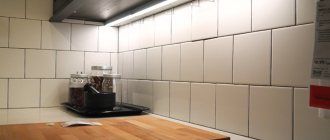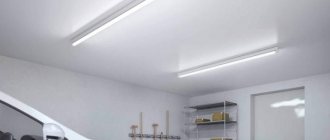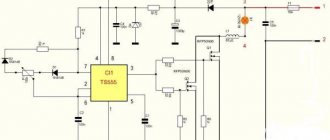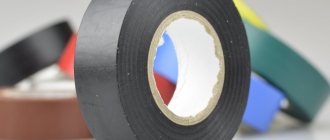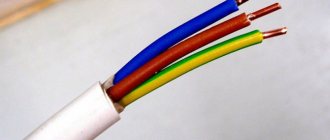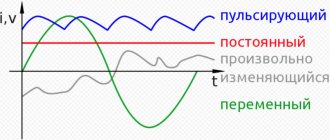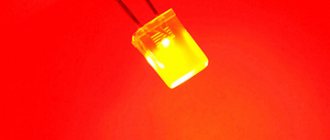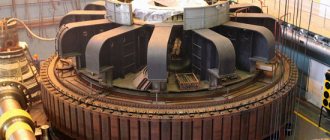LED strips have long ceased to be a curiosity. People are increasingly starting to use them in their home interiors, car exteriors, etc. This is a fairly simple device (light source) to install and maintain. The store sells several dozen types and types of LED strips from various manufacturers. Which ones are better? What is worth buying, and where is it better to avoid the counter? Which brand is better? This is what we will try to talk about today.
In general, the LED strip market is constantly evolving and it is difficult to give any specific recommendations. But the general principle of choosing the best and good LED strips by type or type is still visible, and today I will try to point this out to you.
Types of LED strips by type of LED. The best of them
Tapes made on the basis of SMD 5050 and SMD 3528 LEDs are very popular. What SMD is and the design of these diodes can be found in this article. In a number of technical specifications for the tape you can see 5060 or 5055 chips. In the store, customers often ask me the question, what kind of diodes are these and how do they differ from others? Everything is simple here - 5060 and 5055 are the same 5050, only they have longer chip outputs. You have to be careful here. Most sellers play on the ignorance of buyers and “sell” 5060 tapes to buyers under the guise of being brighter and better. This is not true. So be careful. All tapes are produced for 12, 24 or 220 V. They do not differ in anything special, except for the fact that a resistor is soldered into the low-voltage ones.
—> —>
Also recently, LED strips produced on diodes 5630, 5730 and 2835 have become very popular. These are the latest generation LEDs and have an increased luminous flux compared to their predecessors. There are also tapes on other diodes, but they are not very common and have their own specifics. There is no point in dwelling on them, because... I almost never saw them in our stores. And this is not due to the fact that our customers would not purchase such a product. They are just specific and will take a long time to sell. And this is not beneficial to anyone. These include the side tapes of the 335 series.))) It’s not clear? That's what I'm talking about)
Each of the tapes that I mentioned above has its own characteristics and is used in its own “dioceses”. We should immediately clarify and understand when and where to use LED strips. Only after this can we draw a conclusion about which LED strips are better.
Depending on the LEDs mounted on the strip, we get brightness. For those who want to learn more about the characteristics of LEDs, I provided links earlier. In my material, I will only indicate the light characteristic - lumens.
| Light-emitting diode | Luminous flux, Lm |
| SMD 3528 | 4.5-5.0 |
| SMD 5050 | 12-14 |
| SMD 2835 | 24-28 |
| SMD 5630 (5730) | up to 75 |
Based on these data, we see that the most powerful and best tapes will be 5730 (5630) diodes. And this is where I start to “resist.” Best for what? For pool lighting? Yes! This is the best option (provided that it is moisture resistant). For illuminating an aquarium or car interior - NO! Why do we need such bright light in an aquarium? Unless, of course, we are pleased with the “blind” fish. About the second case - I am a car enthusiast myself. And I also stuck a tape into the interior of the 5630. There was too much light, the space was small, it hurt the eyes. I had to install a less powerful one.
I hope that we have figured out that if we take the characteristics of illumination, then the strips with 5630, 5730 diodes should be considered the best, while 3528 can be considered the “poorest” luminous ones.
You can get confused and start “proving with foam at the mouth” that illumination is not just one characteristic and you should pay attention to the illuminated room and select the tape based on this, but I know from myself that this will not lead to anything. 99 percent of buyers buy BRIGHT ribbons. Regardless of where they want to place them. And only then do they begin to think. I’ll leave it up to them and simply provide data on where to use tapes with various diodes. And using this data is everyone’s decision.
And by the way, at work I printed out a similar table and placed it in a visible place))) The questions have decreased by an order of magnitude... But they still take the BRIGHT one))))))))))) They stand aside, choose and buy the BRIGHT one). I often wonder: “Why? The cost is three times more, you don’t need as much light, then why pay more?” The answer is the same for everyone - “Let it be.” For the future..." Well, let it be) More profit for me)
| LED strips | Applicability |
| SMD 3528 | Illumination of any levels where it is necessary to create subdued light: bedroom, illumination of a workplace in the kitchen, illumination of two-level ceilings (if there is other artificial lighting). Any other lighting for decoration. Not used as an independent light source. Perfectly emphasizes the advantages of goods on store windows, because has dim lighting. |
| SMD 5050 | Tapes are best used in cars: illumination of the underbody, interior, engine compartment, etc. They have proven themselves well as the only source of light in small rooms up to 8 sq.m. for 5 m of tape. They can be used either separately or in conjunction with other light sources. |
| SMD 2835 | Quite bright LEDs. Can be used independently or with other light sources. If used as independent lighting, then 5 m of tape will be enough to illuminate a room of up to 12 sq.m. The illumination will be slightly less than standard. But quite suitable. It is not recommended to use it as a backlight. The light is narrowly focused, gives a clear light boundary, and decorative lighting does not work. It hits you in the eyes. |
| SMD 5630 (5730) | Some of the brightest tapes. It is worth using as independent lighting in rooms up to 18 sq.m. for 5 m of tape. Often used as independent lighting in office spaces and retail spaces. They get very hot. Highly recommended for use in aluminum profiles. Not desirable as decorative lighting. A clear cut-off line of narrowly directed light will indicate the owner’s poor taste. |
These are not my personal whims or recommendations. These are the “wishes” of most tape manufacturers, who recommend installation locations. But you should still trust them, because... They and only they know their products well and where it is best to use them. And not grandmother Nyura, for whom her son bought tape 5730 for a bathroom of 5 sq.m. and now she thinks she is dying, because... the complexion in the mirror is no longer pink, but greenish-blue.
Well, let's stop on this good note. The best LED Tape strips in terms of illumination, the most common in Russia are SMD 5630, 5730. The “lowest” luminous ones are 3528.
Comparison table of characteristics
A general table will help you quickly compare the described tape models.
| Model | Length | Number of LEDs per meter | LED type | Power | Degree of dust and moisture protection | Glow |
| Xiaomi Yeelight Aurora Lightstrip Plus (YLDD04YL) | 2 m | 24 pcs | SMD 3528 | 7.5 W | IP65 | multicolor |
| Rubetek Wi-Fi | 5 m | 60 pcs | SMD 5050 | 7 W | IP65 | multicolor |
| ERA LS5050-60LED-IP20-RGB-eco | 5 m | 60 pcs | SMD 5050 | 14.4 W | IP25 | multicolor |
| Arlight 010366 RTW 2-5000P 24V RGB 2X (5060, 300 LED, LUX) | 5 m | 60 pcs | SMD 5050 | 14.4 W | IP65 | multicolor |
| Navigator 71 NLS-5730 CW/WW 60-30-IP65 | 5 m | 60 pcs | SMD 5730 | 30 W | IP65 | monochrome |
| Feron LS606 ready-made kit 60LED SMD5050 RGB 3 m | 3m | 60 pcs | SMD 5050 | 14.4 W | IP20 | multicolor |
| ERA LS5050-60LED-IP20-W | 5 m | 60 pcs | SMD 5050 | 14.4 W | IP20 | monochrome |
The best tapes are quality tapes
Quality. How can you figure out whether the tape is of high quality or not? It's a difficult question. This is most easily understood by professionals who work with LED sources constantly. Initially this is determined visually. well-made reels on which the tape is wound. Tape backing. Which company is the adhesive layer and a number of other indirect signs by which you can determine a high-quality tape from a low-quality one.
Millions of kilometers of low-quality tapes come to us from beyond the “Chinese border.” In their works of art, Chinese businessmen install their LEDs, with reduced crystals. And this, naturally, will lead to rapid degradation of LEDs. But this is not the worst thing. It’s scary when a manufacturer, knowing that they have installed LEDs with underrated characteristics, also forces them to work at exorbitant power levels.
There is another sign by which you can identify a poor quality tape - the presence of a gold conductor with a chip. Chinese artisans use copper to reduce the cost of the process. Another not unimportant problem is the poor quality of the phosphor. This is especially true for silicone. After rapid aging, cracks appear, moisture enters and the output oxidizes. The result is the same - the LED fails. Since the tapes are assembled in segments of three diodes, the segments will not work. In general, tapes with “bad” diodes work for no more than six months. Usually 2-3 months. Tapes with more or less satisfactory chips work at high currents for up to a year. But their brightness drops right before our eyes.
It is not uncommon to purchase strips with diodes that produce no more than 3 lumens, despite the fact that they are assembled on SMD 5050.
To protect yourself from low-quality products and choose good LED strips, you must first ask the seller about some information about the product.
No. 4. Need for protection
LED strips vary in the degree of protection against dust (solid particles) and moisture. The protection class is indicated by the IP marker and the following two digits, written separated by a fraction:
- dust protection;
- the next one speaks of moisture resistance.
In order for the operational life of the LED strip to be as long as possible, you need to select it in accordance with the conditions of intended use.
- IP67/68 – places of high humidity, for example, swimming pools, artificial ponds and fountains, aquariums.
- IP43/44 is for places periodically exposed to high humidity - floor skirting boards, kitchen work area and bathroom.
- IP20 - applicable only for living rooms, these indicators will be sufficient.
- IP 54/55 – indicators that LED strips for street lighting should have.
LEDs without PVC and silicone sealing do not overheat. Due to the lack of a protective coating, there is no light scattering, the diodes burn brighter.
When covering the tape with sealant, crystals of lower power are used to prevent overheating. The highest degree of protection is provided by tapes with a PVC tube for decorating objects filled with water. Such tapes become very hot when electricity passes through them, and the surrounding water naturally lowers the temperature.
Important: the power supply level of protection must correspond to the markings on the tape.
Do not try to play it safe and use a tape with protection higher than objective conditions. Silicone left in the closet will dry out. As a result, the tape will lead, the insulation will crumble and some of the backlight areas will fail.
How to distinguish a good quality LED strip from a bad one
The first is to require a certificate from the seller. Although, in our age of high technology and dishonest sellers, you can always be shown fake papers. So the presence of certificates is not always an indicator of a truly good LED strip.
Secondly, check the brightness of the diodes. Easily checked with a lux meter. Not suitable for everyone, because... Not everyone has it in their home. But it would be necessary. You don’t have to buy yourself an expensive device. All you have to do is buy a cheap one and use it. Moreover, it will always be useful to you. Once you decide to engage in LED lighting, you are unlikely to be able to refuse it. And the brightness needs to be checked. Someone will say that cheap Chinese “display meters” are not serious to work with and they show the weather. I may disagree. Gentlemen from heaven have long learned to produce good goods. But we don’t need this. Having any lux meter device in hand, we should measure the illumination from any incandescent lamp at a distance of 50 cm. I would suggest 100W. These lamps have almost the same luminous flux. Remember the indicators and measure the tape or other light source in the same way. This way you can easily determine the difference between the illumination from an incandescent lamp and any other LED light source. This method, of course, is approximate, but it makes it possible to understand how much manufacturers are lying (or not) when indicating certain data on the illumination of the LED strip.
1 Good tapes include those produced on the basis of Epistsar chips. They are one of the budget ones and produce a good beam of light. If we take an SMD 3528 LED strip (60 chips per meter), we get a brightness of about 300 lumens per meter. Degradation, with proper operation, will not exceed 2-4 percent for every 1000 hours of operation.
2I have already mentioned bad tapes above. A meter of homemade Chinese tape hardly reaches 200 lm. But everything would be fine. It seems cheap and would be suitable for illumination with beer, but the level of degradation is simply stunning. At least 20 percent for every 1000 hours of operation. Those. on average, after 1000 hours you can lose a quarter of the brightness of the tape. And this is already significant. And even if the diodes do not burn out, there will be little light from them and it will have to be changed. Not a bright prospect. Especially if the tape is installed in a hard-to-reach place.
3Very good LED strips are also produced on Epistar chips, but with a brightness of at least 6 lm. Such devices are produced by honest Chinese gentlemen. The brightness on the same 3528 reaches up to 400 lm per meter. Already something! Degradation at a low level is no more than 1 percent per 1000 hours. But even such tapes have one significant disadvantage - the price. The cost per meter is almost 25 percent more than that of the “good” ones.
4Well, the best LED strips are premium devices. They are difficult to find on the open market. For the most part, they are produced on special basis. order. Chips can be installed from different well-known manufacturers, including Samsung. With such diodes, the tape will be simply magnificent. The brightness per meter will be at least 500 lm per meter. But also the price...(1.5, or even 2 times more expensive than “good” ones.
I always suggest buying only these if you install tapes in hard-to-reach places, if the tape needs to be used as lighting, etc.
For simple lighting, a good Chinese one will suffice. Fortunately, there are now a lot of them. You just need to choose correctly.
Tapes on more powerful SMD 5630 or 2835 are also available on sale. The advantage is low thermal resistance. Due to this, the service life of the latter increases. Again, Chinese bad diodes have crystals from 0.06 to 0.2 W in their housing, instead of the required 0.5 W. This can be immediately understood by the price. If you see on sale the price of such a tape is almost the same as 5050 or not much more, and the seller is also trying to assure you that technology is moving, crystals are getting cheaper, etc. - don’t believe it. This is pure deception. A tape produced a priori with more expensive crystals cannot cost the same as its predecessors. This can never happen. Despite advanced technologies.
And I would like to draw your attention to the fact how else you can distinguish a bad LED strip from a good one, and maybe even a better one.
Installation features
Almost all diode light strip models have an adhesive base, which makes them easy to attach to almost any smooth surface. To do this, you just need to degrease the desired area where you want to install the light strip, remove the protective film from it and lean it against the surface. The whole process works on the principle of double-sided tape. However, the density and durability of the installation will depend on the heat generated by the tape and the need for additional cooling. Based on the type of heat generation (for fastening), the tapes are divided into two groups - up to 14 W/m and more than 14 W/m. Options emitting up to 14 W/m can naturally dissipate heat, i.e. they do not require additional cooling. Natural air circulation will be sufficient for them and they will not peel off from the supporting surface.
If the strip light model generates heat close to 14 W/m, then it will require special cooling - it must be mounted on a surface with good heat transfer. In extreme cases, it is possible to use a substrate based on aluminum tape. If heat is generated in very large quantities, then you simply cannot do without an aluminum profile for fastening.
If the tape is connected directly to the network without a power supply and is enclosed in a special transparent PVC box, then the box itself is secured using special brackets.
Good and bad LED strips on a printed circuit board
The types and types of tapes are off the charts in their diversity. Printed circuit boards on which LEDs are placed can also be made in various versions. Flexible printed circuit board (FPC) is very popular. And first of all, an ordinary buyer can easily determine and understand how bad the tape is - look at it closely. Many people believe that the quality of the diode strip is determined by the color of the mask. I don’t know where this statement came from.
The quality of an FPC board is determined only by the thickness and method of applying the copper conductors. Good boards have rolled copper, which is what you see on regular boards. FPC must be double sided. Such a tape has low resistivity, the voltage drop is the same along the entire length, and all chips shine equally. This is clearly visible when the tape is connected twice (on both sides).
In bad boards, copper is applied by sputtering. I won’t tell you what diffuse spraying is, and you don’t need it. The main thing is to understand and understand that such copper has a small thickness and a heterogeneous structure. Diode degradation can reach up to 90 percent.
Therefore, to check the tape, ask the seller for a piece of tape. They have special samples for this. Peel off the sticky layer and look at the underside. If the copper conductor is visible, then the board is double-sided and the tape is of good quality. Nobody will bother and release a tape with a good board and bad LEDs. If it is not clear whether the board is double or not, expose the area with the copper conductor on the front part. And scratch it with your fingernail. Sprayed copper will be erased quite easily. In this case, you can safely turn around and leave the store. Well, or look at another copy. But I don’t think that if a store has at least one cheap, low-quality product, then it will have a good one.
Well, that's all. We've looked at a number of principles for identifying good quality LED strips. I already talked about the best ones. One tape for one room will be considered the best, and the second, despite the fact that it is made with high quality, will not be the best use.
No. 8. How to calculate the required cross-section for a wire
In order for the LED backlight system to work properly, it is necessary to select wires with a sufficient cross-section to pass the required current. The cable must withstand 135% of the rated current supplied by the power supply.
- The power supply is connected with a standard cable designed for 220V voltage.
- The wires are selected according to the parameters of the power supply.
- You can connect a tape up to 5 meters in series. For lengths exceeding this value, only parallel connection is used.
- Copper wires are used as the best conductor.
- When the power supply is located remotely from the backlight, a wire cross-section of 1.5 mm2 is recommended.
- Calculate the required cross-sectional area of the cable: 10A voltage requires 1mm2.
The best LED strips by manufacturer
Since there are simply an incredible number of tape manufacturers and I simply don’t know them all, I will focus only on those that I myself have encountered.
1 I would give first place, of course, to European-made tapes - Sveteco, Cree, Joliet Technology, Geniled. This is not even discussed. And they can easily be classified as the best LED strips both in terms of quality and illumination.
2If we take Russian manufacturers, then in terms of light quality I am most satisfied with the products from LEDCraft and LUX tapes from ArLight. LUX is more to my liking. Their products look better. And not only in terms of tapes. LEDcraft are simply good tapes. Without any pronounced pros or cons.
3 Despite the fact that there are already a lot of Russian and European-made tapes on the markets, many still want to buy cheaper. There are a number of Chinese stores for such comrades. where you can buy some pretty good tapes. In any case, they are no worse than Russian ones, but for the price they are very pleasing. The only thing is you need to wait up to 1 month. But you will get, if not the best, but a good LED strip for little money.
Connection via controller
Another benefit that few people think about is the more efficient use of controllers and dimmers.
They all have a current limit per channel. With a heavy load and a length of 15-20 meters, for 12v tapes it is necessary to build signal amplifiers into the circuit, significantly complicating the circuit.
The controller, as a rule, is designed to operate equally on both 12V and 24V voltages.
But since the current at 24V is half as much, the same controller or dimmer can control the backlight with twice the power!
